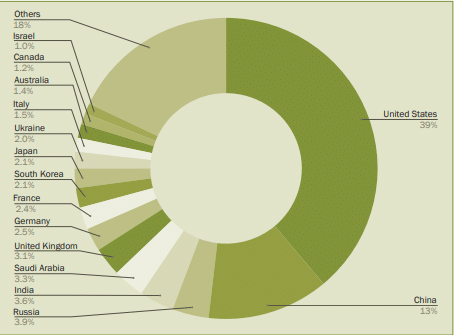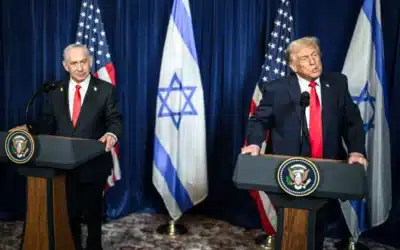Global weapon expenditures hit a record $2.24 trillion in 2022, an increase of nearly 4%, according to the Stockholm International Peace Research Institute (SIPRI). The global watchdog found the trend was led by European countries returning to Cold-War spending levels, though the United States remained the world’s largest spender on war by far.
SIPRI released its latest annual report on Monday, finding that worldwide military expenditures had increased for the eighth consecutive year. Dr. Nan Tian, a senior researcher with SIPRI’s Military Expenditure and Arms Production Program, said “The continuous rise in global military expenditure in recent years is a sign that we are living in an increasingly insecure world.”
Overall European military spending increased by 13% in 2022. For many nations on the continent, weapons expenditures increased to levels not seen since the Cold War. During the same period, Finland (+37%), Lithuania (+27%), Sweden (+12%), and Poland (+11%) each increased their military budgets more than Russia, which saw a 9.2% jump amid the war in Ukraine. Kiev’s year-to-year war spending increased by a staggering 640%, reaching $44 billion.
American military spending continues to smash records, having long held the number-one spot for military largesse. According to the SIPRI report, the nearly $20 billion in weapons Washington shipped to Kiev in 2022 is the largest amount of security assistance one country has ever provided to another in a single year.
Additionally, the US remained the world’s largest military spender at $877 billion – more than the total military budgets of the next 11 top-spending countries combined. Many of the other high-spending nations are allies of Washington, with military expenditures among NATO members topping $1.23 trillion.
William Hartung, senior researcher at the Quincy Institute, explained that the increasing military outlays are a bad sign for peace while stressing the importance of diplomacy.
“The surge in spending does not bode well for global peace and stability, but the prospects for war and peace hinge on more than just money spent,“ he wrote in a recent article, adding “the key question is whether diplomatic initiatives aimed at ending current conflicts and reducing mounting tensions among major powers can take precedence over war and preparations for war in government policies.”
































